- This article contains pictures of fish entrails and the parasite Anisakis. If you do not wish to view them, please turn back.
- [Disclaimer] Although I have verified the black light, there is a good chance that you may miss anisakis that have entered fish body. Please handle information at your own risk.
Anisakis, a parasite that is often talked about when eating raw fish, is something that people who like to eat fish dishes such as sashimi and sashimi need to be aware of.
I often buy whole fish and eat them as sashimi, and my family eats them together, so I always pay attention to them.
There are several ways to deal with anisakis, but this time I tested a method that upgrades the visual check that is generally considered as a countermeasure.
That is the method of using a black light. A black light is a light that can emit ultraviolet rays (315-400 nm). We rarely use it in our daily lives. However, anisakis is able to be detected with a black light because it reacts to ultraviolet rays in the 370nm wavelength range.
Penlight-type blacklights are sold as general-purpose products, but the most commonly sold wavelength that is close to 370nm is 365nm. Let’s see if it reacts properly to this 365nm wavelength.
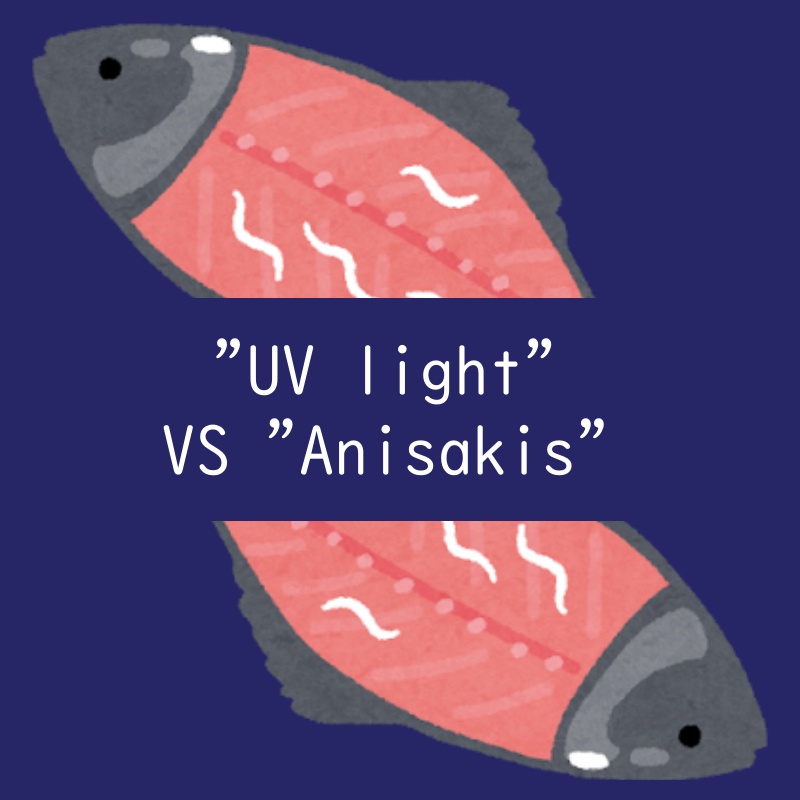
Conclusion
Anisakis reacts to a wavelength of 365 nm.
(It should be noted, however, that there may be individuals with weak reactions.)
Verification results and equipment used
In fact, please take a look at this photo. This is a picture of the belly of a certain fish. The edible part of the fish was not attached to the meat, so I dared to check the internal side by UV irradiation with a black light.
Verification results
The photo on the left was taken under indoor lighting (fluorescent light).
The photo on the right was taken under darkened indoor lighting and UV (ultraviolet rays 365nm) irradiation.
Photo 1: Objects that have entered the internal organs
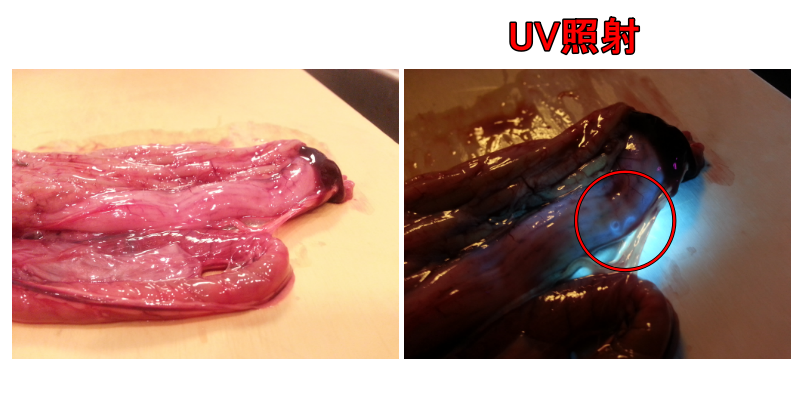
Photo 2: Objects on the surface of internal organs
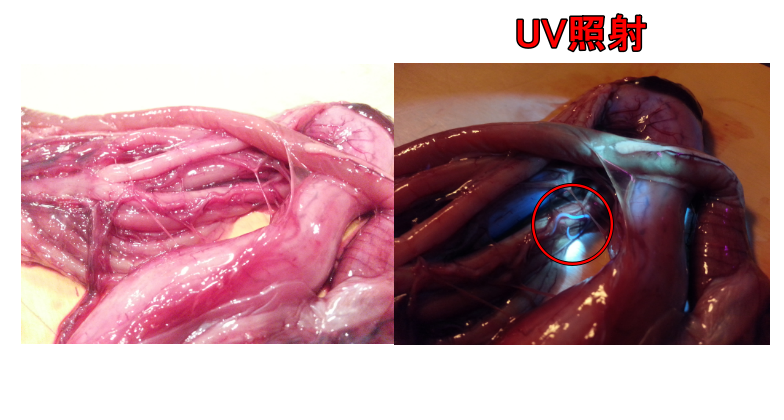
Photo 3: Objects on the surface of internal organs
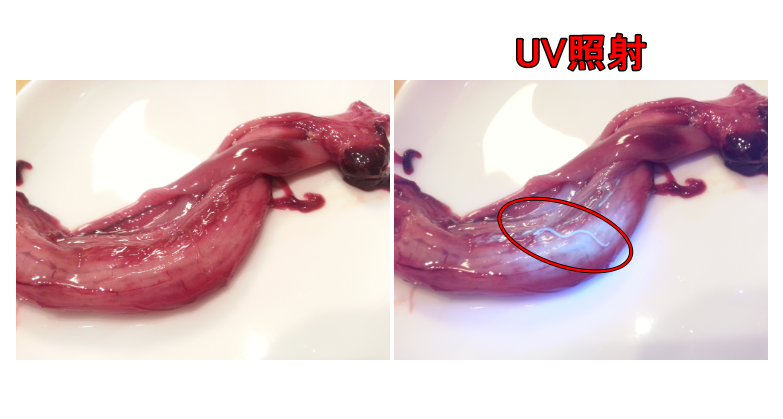
As mentioned above, I have found that it reacts to ultraviolet light at a wavelength of 365nm. I think it is worth using in terms of reducing the risk of missing something visually (personal opinion).
Here is another picture. Can you guess which one it is?
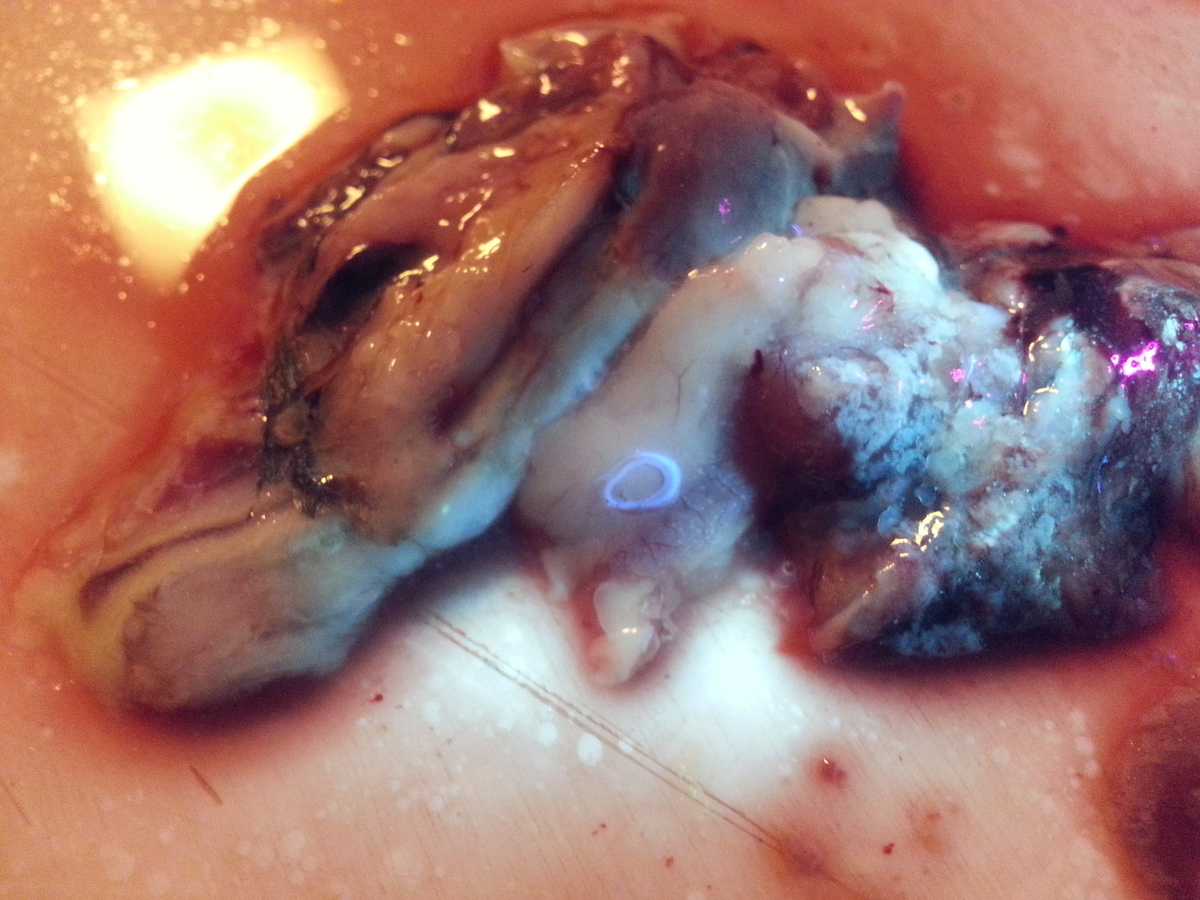
The curled up thing in the center of the photo is an anisakiasis.
Equipment used
The product used this time is a rechargeable UV flashlight from Nichia Corporation. It is a small flashlight similar to a penlight.
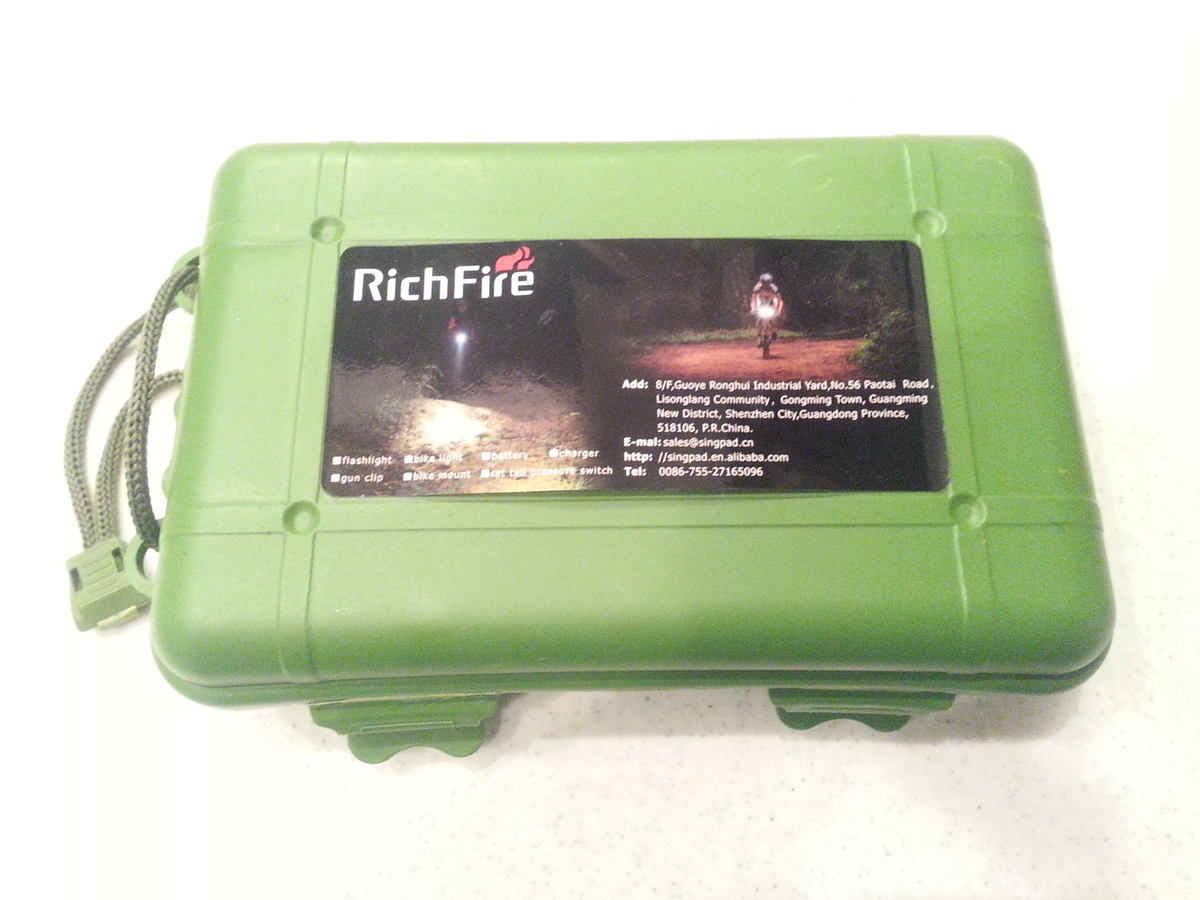
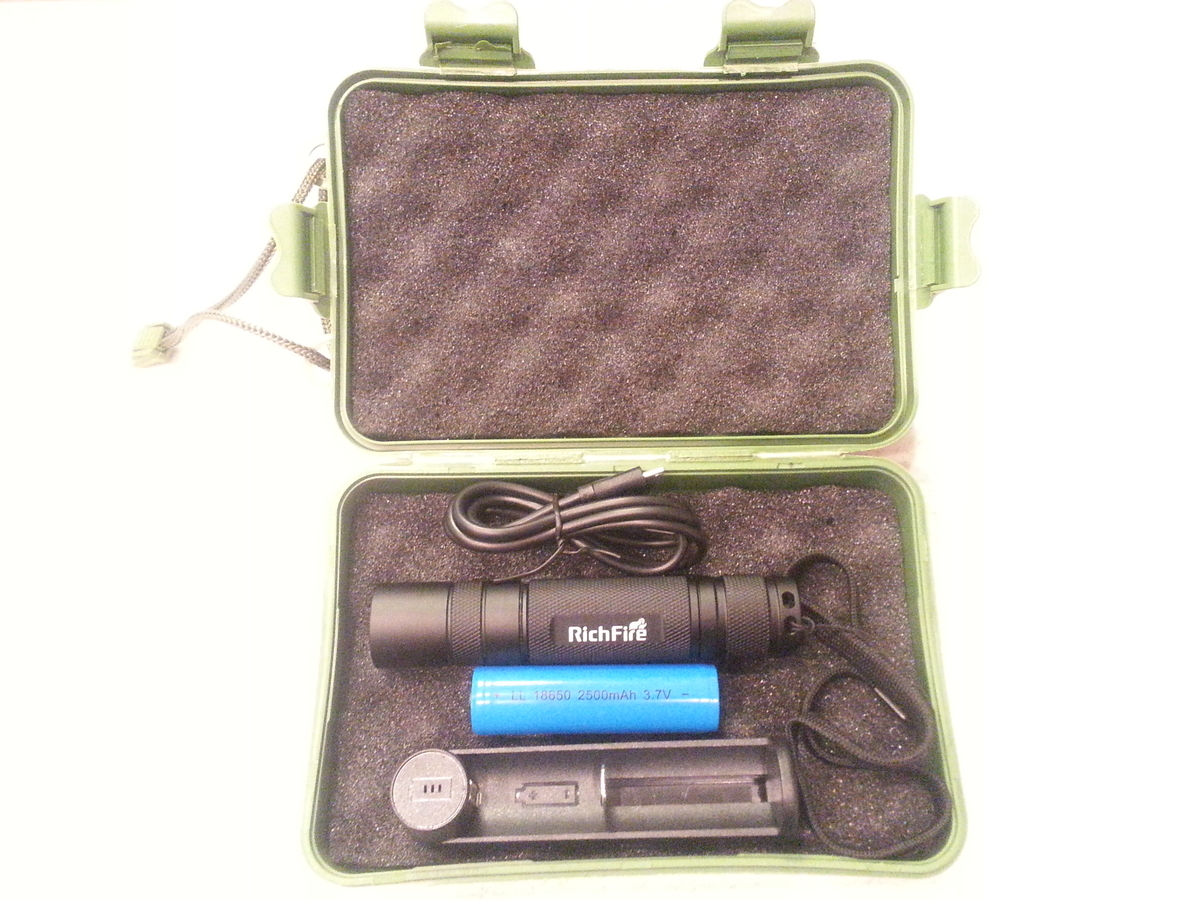
- Comes with case and strap.
- Comes with rechargeable battery and charger.
- Bright enough. Satisfactory product.
Adequate brightness is an important factor. This is because when visually inspecting fish flesh, we want to see the inside of the flesh as much as possible, not just the surface. If the brightness is high, it is relatively easy to see the inside of the flesh. As an example, Photo 1 pasted above should be easy to understand.
=Other=
I have not verified this, but there is a product with a penlight-type black light (wavelength 365nm) that clearly states that it is “effective for anisakiasis detection. The product name is “Clean Checker”.
General Anisakiasis Prevention
Here are some of the prevention methods recommended by the Japanese Ministry of Health, Labor and Welfare. The first one is “For Consumers”.
🔷When purchasing fish, choose fresh fish. Also, if you purchase a whole fish, remove the internal organs as soon as possible.
🔷Do not eat the entrails raw.
🔷Remove anisakiasis larvae by visual inspection. Anisakis larvae will not be killed by treatment with vinegar, salted fish, soy sauce, or wasabi (Japanese horseradish), which are commonly used in cooking.
Next is “For Businesses,” with the following two items added to the “For Consumers” section above.
🔷Please freeze. (Freeze at -20°C for at least 24 hours)
🔷Please Heat. (70°C or higher, or 1 minute at 60°C)
In order to strengthen this “visual confirmation” measure, a very expensive anisakiasis detector has been developed for commercial use. It seems that a light that reacts only to anisakiasis has been developed. There is a product like this for commercial use. It was jointly developed by the manufacturer and Kyoto University, and a patent is pending.
However, no device seems to be a panacea, and many of them state as a proviso that “it can detect the surface of the meat, but not those that have penetrated the meat,” “some Anisakis are less sensitive than others,” or “it may be difficult to detect white fish and squid. You call it a detector, but state that its effect is “to reduce risk.
Is it true that Seirogan is effective for anisakis?
Answer ⇒ Preventive and symptom-improving effects can be expected (*no assurance can be given).
Daiko Pharmaceutical has applied for and obtained a patent for “Moku (wood) creosote” as a drug for prevention and symptom improvement of gastric anisakiasis. The main ingredient of this “Moku Creosote” is Seirogan.
<Expected benefits>
- For mild anisakiasis, pills can be taken to inhibit anisakiasis movement and reduce or eliminate symptoms.
- If the anisakiasis is suppressed, surgical removal becomes easier.
- If taken before a meal, the same action will have a preventive effect.
For reasons related to the Pharmaceutical Affairs Law, Seirogan was not registered as a medicine for anisakiasis, so even today, it cannot be used as a medicine for this purpose.
I, personally, would take Seirogan if I suspected anisakiasis from my symptoms.
Anisakis and me (personal experience, thoughts, etc.)
I will tell you my personal story. Luckily, my family and I have never had anisakiasis. We often buy whole fish and eat them raw, but when we do eat them raw, we take care to cook them in the following ways.
-
Buy the freshest fish possible.
-
Immediately remove the internal organs of the fish you buy. This is because Anisakis moves from the entrails to the flesh when the temperature rises or the entrails become damaged.
-
Use the dorsal side of the fish as much as possible for sashimi.
-
If using belly meat, shave off more belly meat when scooping the belly bone.
-
In addition to the usual visual inspection, irradiate the fish with UV light.
-
If you find any anisakis, even in the internal organs, do not eat the fish raw.
-
Cut the meat into thin slices, if possible, to increase the probability of finding anisakis. (Thinly shaved meat makes it easier to see anisakis.)
Fish I have found anisakis so far include. Horse mackerel, mackerel, herring, shishamo, cod, hokke, and trout. However, in all cases, the anisakis were not in the meat of the fish, but in the internal organs or on the surface of the body. Since whole fish are purchased at the fish market, they are fresh and have passed through the eyes of professionals, which may make them somewhat less risky. However, we still need to be careful when eating raw fish.
What are the chances of getting anisakiasis?
The Center for the Promotion of Fish Eating in Japan has made the following estimates, which are quoted for reference.
I calculated the probability of getting gastric anisakiasis from eating sashimi, although somewhat wildly. Assuming that the entire nation (125 million people) eat raw fish once every week (50 times/year) and 7,000 cases occur annually, the probability is 7,000/(125 million people x 50 times/year) ≈ 1/900,000 servings, which is equivalent to the probability of winning a 10 million yen lottery ticket.
Interesting…they say it’s the same as winning the 10 million yen lottery (lol).
Latest News (Announced June 22, 2021)
According to the latest report, a joint research by Kumamoto University and Japan Sea Foods has found a way to kill anisakis by applying an instantaneous high electric current to the fish meat. It is surprising that the insects can be killed while maintaining the freshness of the sashimi without freezing or heating. The prototype seems to be yielding good results, and samples are expected to be shipped this fall. Currently, the company is also examining whether the product can be used on a commercial basis, including costs. The future when we can buy fresh fish without worrying about anisakis may be approaching. I am looking forward to it. We wish you all the best!
For more information, please click here.▶パルスパワーを用いた新しいアニサキス殺虫方法を開発 ―アニサキス食中毒リスクのない刺身― | 熊本大学
=スポンサーリンク=
Summary
This verification showed that Anisakis reacts to the black light wavelength of 365 nm. Therefore, we conclude that it can be used for the purpose of reducing the risk of missing something by visual confirmation. However, there seems to be no universal model, even for professional use, so care must be taken in its use.


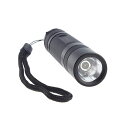

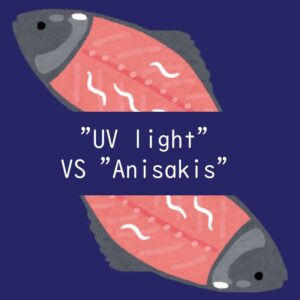
コメントお願いします(※は必須項目)